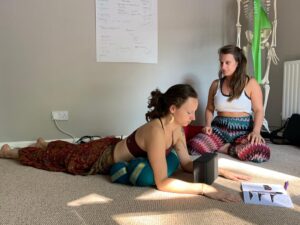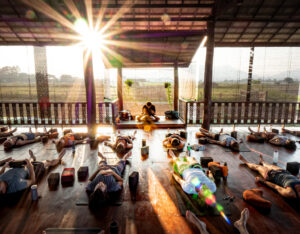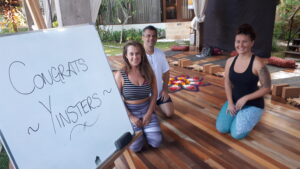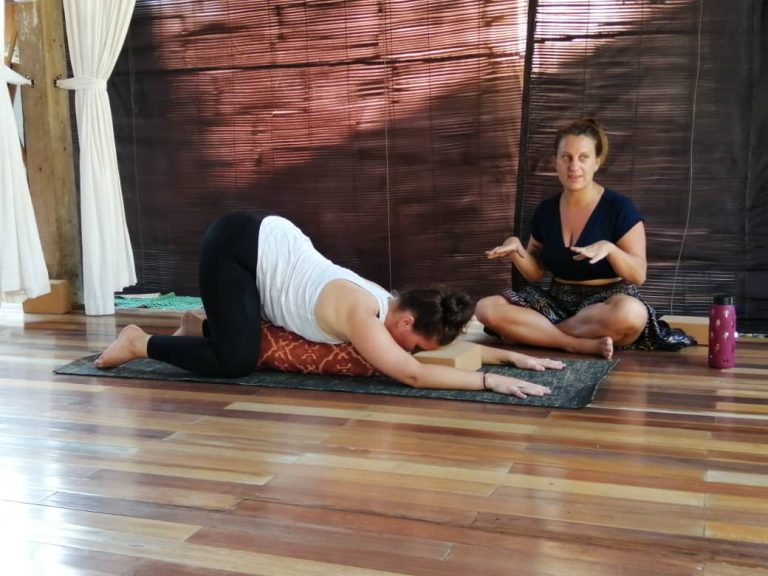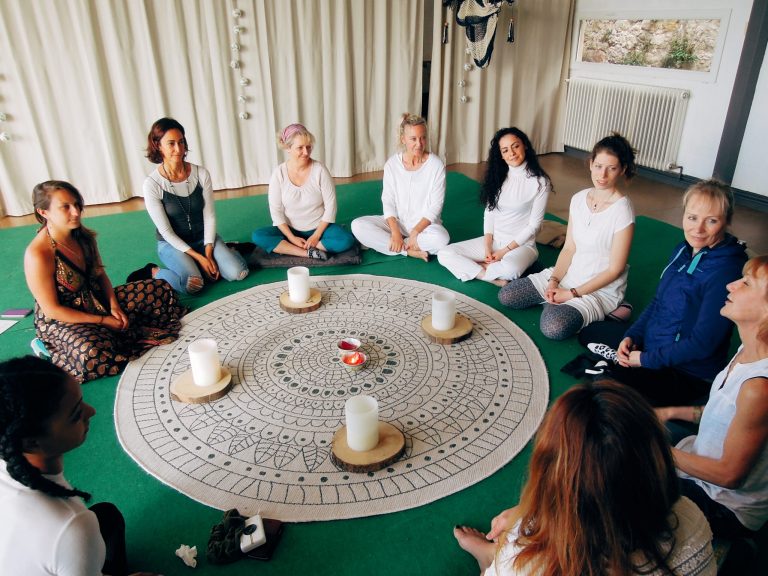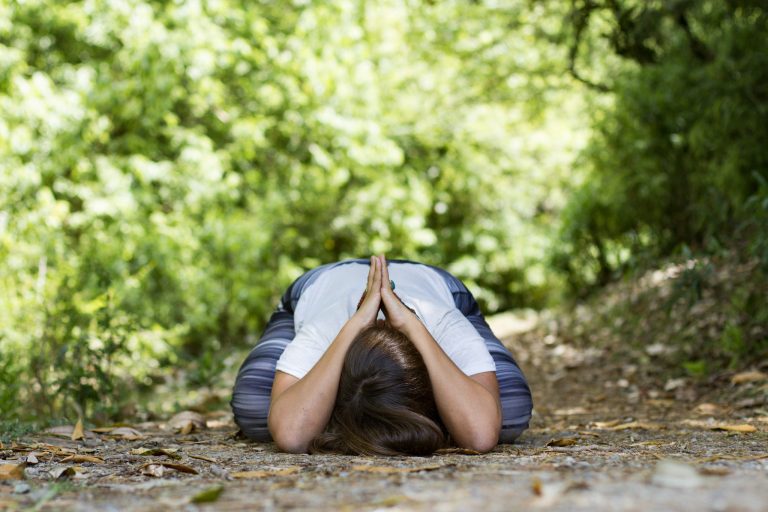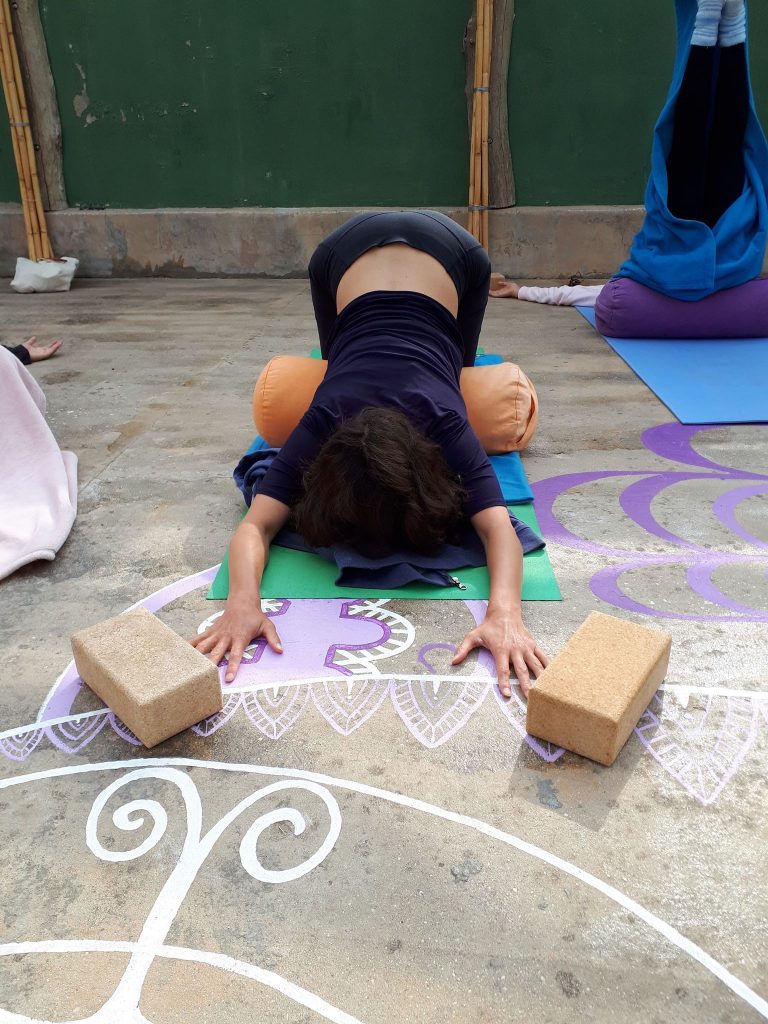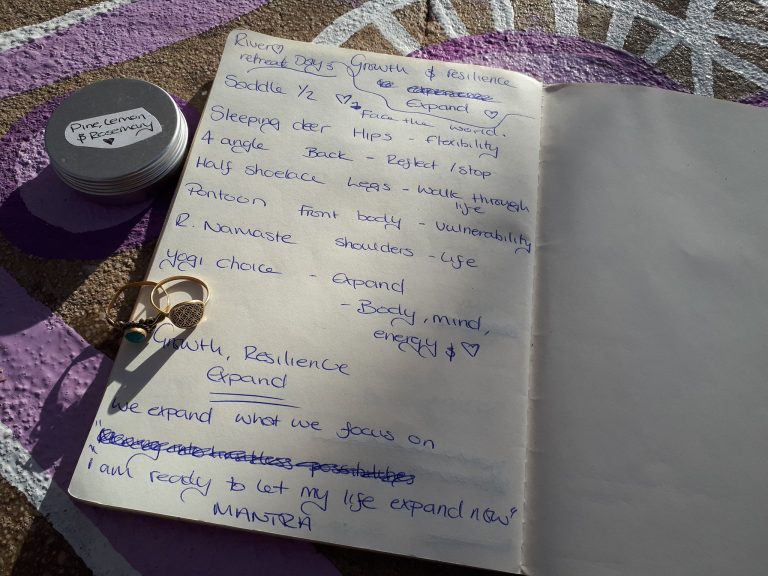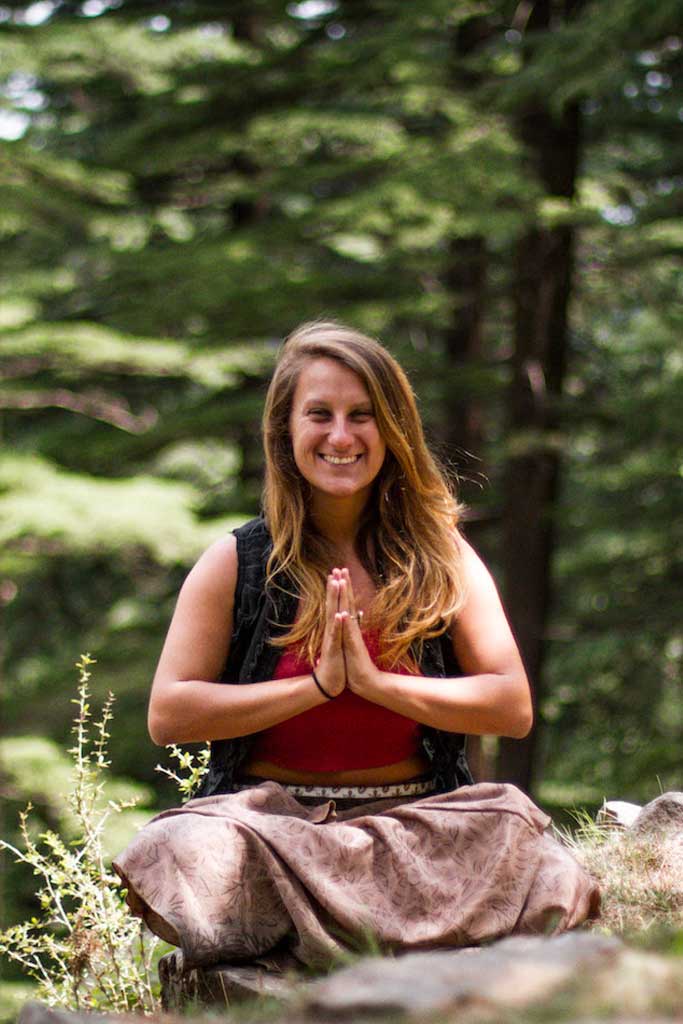What is Propping and Why Is It Important In Yin Yoga?
Written By Anna Caldwell
Propping is one of the most important components of a Yin Yoga practice. The art of propping is a component that we dive deeply into in a Yin Yoga Teacher Training, as it is foundational for a holistic practice both for ourselves and for our students. Propping is really what defines Yin Yoga in comparison to other restorative styles of yoga. So what is propping in Yin Yoga? Stated simply, propping is primarily the use of blocks and bolsters during a Yin Yoga asana practice to make the practice both accessible and functional. Props give accessibility to the asana in a way that allows the body to be comfortable and relaxed.
One of the most important reasons one uses props in a Yin Yoga class is to support the body weight to avoid “hanging in the joints.” In Yin Yoga, the muscles that usually aid in holding up our body are relaxed, so the entirety of one’s body weight goes into the fascial matrix spanning the body. Indeed, the muscles are not active, so the tension is caught by the connective tissue. In some ways, this is a good thing if the practitioner is sustained and monitored as well as mindful and conscious of their edge. We avoid hanging out in this space in which the ligaments are receiving and baring all of the stress. In this way, one must stay mindful and attentive to the edge of comfort in a Yin Yoga session. Yin Yoga is unique in that the body is not intended to be holding all of its own weight, due to the fact that the muscles are not active as they are in Hatha Yoga. This is where props come in. The props take the brunt of our body weight, so that it is not all placed in a potentially harmful way on the sensitive connective tissues of the body.
We use the term “active propping” in teaching Yin Yoga, as the way in which we prop is deeply unique to the individual and evolves over time, both on a larger scale and within individual class sessions. This means that we are moving and adjusting the props according to how our body adapts to a particular posture. We may ask: “Where is my edge of comfort in this moment?” “How can I readjust to approach my edge of comfort in a way that is sustainable and relaxing?” This allows for consistent change and development throughout the practice.
As teachers, we must be consistently observing our students and how their practice develops over time. In this way, we are able to modify our cues and the way in which we speak to be both educational and helpful to the students. It is of paramount importance that we remember that every single body is uniquely different. What may increase stress and tension in my body through a propping variation, for example, may decrease it in yours with the same propping options and vice versa. The key to a great Yin Yoga Teacher is really understanding that no two bodies are the same, while bridging this concept into how we guide our students through the Yin Yoga session.
Yin Yoga is a continuous journey of self-exploration in which we are always mindful of how we are feeling inside. Through this self-awareness we can use props to adjust our practice the way it needs to be adjusted in order to receive the mental, physical, spiritual and energetic benefits of this beautiful practice of Yin Yoga.
If you are interested in learning more about propping and training in Yin Yoga, Shanti Atma Yoga offers a variety of trainings exploring the many avenues to self-healing, teacher development and deepening your yoga practice:
Yin Yoga Teacher Training Online:
Yin Yoga Teacher Training: 100 hour Functional Anatomy and Chinese Medicine
Yin Yoga Teacher Training: 100 hour Pranayama, Meditation and Mindfulness
Yin Yoga Teacher Training: 80 hour Yin Yoga and Yoga Nidra
Yin Yoga Teacher Training: 50 hour Neuroplasticity and Mindfulness
Yin Yoga Teacher Training: 50 hour Essential Oils and Emotional Intelligence
Residential Yin Yoga Teacher Training:
Yin Yoga Teacher Training: 100 hour Functional Anatomy and Chinese Medicine
Yin Yoga Teacher Training: 100 hour Pranayama, Meditation and Mindfulness
Yin Yoga Teacher Training: 80 hour Yin Yoga and Yoga Nidra
Yin Yoga Teacher Training: 50 hour Neuroplasticity and Mindfulness
Yin Yoga Teacher Training: 50 hour Essential Oils and Emotional Intelligence
Yin Yoga Teacher Training: 200 hour 5 Bodies Approach
Locations:
Yin Yoga Teacher Training Bali
Yin Yoga Teacher Training Thailand
Yin Yoga Teacher Training India
Yin Yoga Teacher Training Spain
Yin Yoga Teacher Training Australia
Yin Yoga Teacher Training Guatemala

